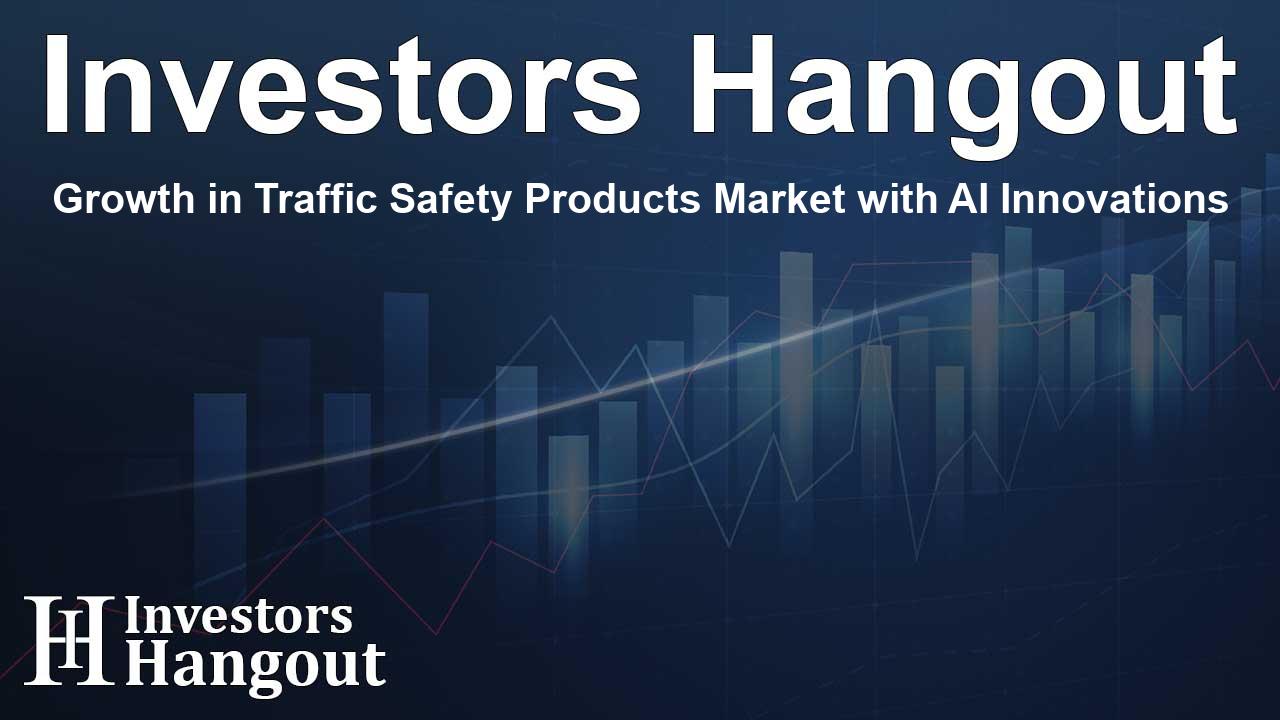Growth in Traffic Safety Products Market with AI Innovations

Transforming Traffic Safety Products Market Dynamics
The global traffic safety products market stands at the cusp of a significant evolution, primarily driven by the advancements in AI technology. This market is positioned for substantial growth, anticipated to increase by USD 1.25 billion from 2025 to 2029. The growth pace is projected at a compound annual growth rate (CAGR) of 6%. A noticeable shift towards enhancing road infrastructure is a key factor propelling this growth.
Eco-friendly Innovations in Market Offerings
Currently, there is a marked inclination towards eco-sensitive alternatives within the traffic safety products landscape. Manufacturers are now focusing on developing products using recycled materials, responding to global concerns regarding pollution linked to traditional materials such as PVC and rubber. For instance, many companies are now utilizing recycled rubber sourced from waste tires to produce essential traffic safety tools, including cones and barricades. This trend mirrors the commitment of companies like Avery Dennison in advancing sustainable traffic sign production.
Insight into AI-Driven Market Changes
AI technology stands at the forefront of this transformation, enabling product innovation and operational efficiency. A detailed analysis of the current advancements reveals how AI is facilitating more effective road safety solutions. Intelligent transportation systems, powered by AI and big data, have become essential tools for ensuring adherence to safety protocols while complying with regulatory frameworks. The introduction of these technologies is not only improving safety outcomes but is also addressing strict environmental regulations.
Current Challenges to Market Growth
Despite the optimistic growth trajectory, the traffic safety products market faces considerable challenges, particularly in underdeveloped regions. High rates of road accidents often stem from a lack of awareness regarding road safety and insufficient infrastructure investments. Predominantly in regions where access to well-maintained roads is limited, like certain areas in Africa, the absence of robust policies greatly restricts effective development and can often result in tragic outcomes.
Comprehensive Market Segmentation Analysis
To understand the nuances of the market better, it’s crucial to explore the various segments it encompasses. The traffic safety products market can be categorized based on product type, end-user applications, and geography. Key product segments include traffic vests, tube delineators, traffic cones, and barricades. Moreover, the end-users of these products vary widely, encompassing both municipal entities and private commercial sectors.
Regional Market Insights
The geographical dynamics of the traffic safety products market reveal diverse challenges and opportunities in regions including APAC, North America, Europe, the Middle East, Africa, and South America. Each region has unique characteristics affecting its approach to road safety and traffic management. For example, in North America, the reliance on advanced systems is increasingly evident as traffic management is being integrated with smart technologies to enhance safety.
Technological Implementation and Future Prospects
The intersection of technology and traffic safety is paving new pathways for market participants. Connected vehicles, AI-based data analytics, and smart traffic management systems are reshaping how safety solutions are realized. In addition, the adoption of smart technologies such as traffic sensors, cameras, and autonomous vehicles are envisioned to lower accident rates significantly by providing real-time data and intelligence for better decision-making.
Frequently Asked Questions
What is the projected growth of the traffic safety products market?
The market is estimated to grow by USD 1.25 billion from 2025 to 2029, with a CAGR of 6%.
How is AI influencing the traffic safety products industry?
AI is driving innovation, enhancing efficiency, and facilitating more effective road safety solutions through the integration of intelligent systems.
What challenges does this market face?
Challenges include a lack of road safety awareness, inadequate infrastructure, and limited enforcement of safety regulations in developing regions.
What are the key categories within the traffic safety products market?
The market segments include product types such as traffic vests, cones, barricades, and end-users ranging from municipal to commercial sectors.
Which regions are the primary focus for traffic safety innovations?
Primary regions of focus include North America, APAC, Europe, the Middle East, Africa, and South America, each presenting unique challenges and opportunities.
About The Author
Contact Olivia Taylor privately here. Or send an email with ATTN: Olivia Taylor as the subject to contact@investorshangout.com.
About Investors Hangout
Investors Hangout is a leading online stock forum for financial discussion and learning, offering a wide range of free tools and resources. It draws in traders of all levels, who exchange market knowledge, investigate trading tactics, and keep an eye on industry developments in real time. Featuring financial articles, stock message boards, quotes, charts, company profiles, and live news updates. Through cooperative learning and a wealth of informational resources, it helps users from novices creating their first portfolios to experts honing their techniques. Join Investors Hangout today: https://investorshangout.com/
The content of this article is based on factual, publicly available information and does not represent legal, financial, or investment advice. Investors Hangout does not offer financial advice, and the author is not a licensed financial advisor. Consult a qualified advisor before making any financial or investment decisions based on this article. This article should not be considered advice to purchase, sell, or hold any securities or other investments. If any of the material provided here is inaccurate, please contact us for corrections.
